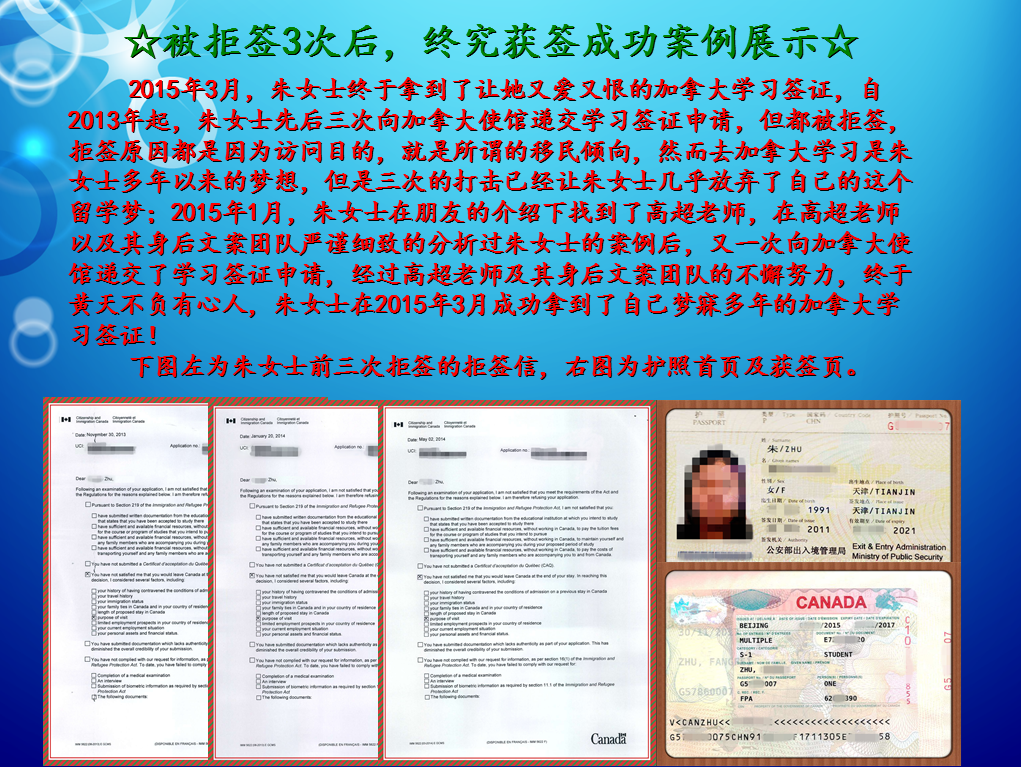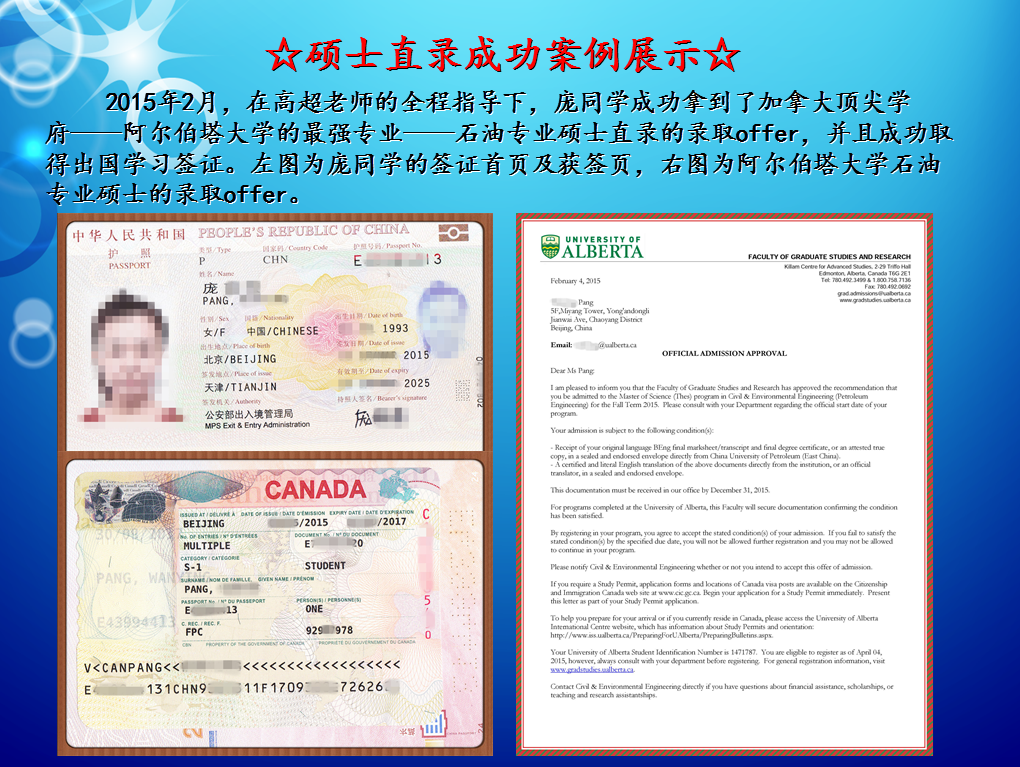第一个感恩节时,人们吃的什么?.
2017-08-14 417阅读
第一个感恩节时,人们吃的什么?感恩节食物是什么?
What was on the menu at the first Thanksgiving?
Today, the traditional Thanksgiving dinner includes any number of dishes: turkey, stuffing, mashed potatoes, candied yams, cranberry sauce and pumpkin pie. But if one were to create a historically accurate feast, consisting of only those foods that historians are certain were served at the so-called “first Thanksgiving,” there would be slimmer pickings. “Wildfowl was there. Corn, in grain form for bread or for porridge, was there. Venison was there,” says Kathleen Wall. “These are absolutes.”
Two primary sources—the only surviving documents that rerence the meal—confirm that these staples were part of the harvest celebration shared by the Pilgrims and Wampanoag at Plymouth Colony in 1621. Edward Winslow, an English leader who attended, wrote home to a friend:
“Our harvest being gotten in, our governor sent four men on fowling, that so we might after a special manner rejoice together after we had gathered the fruit of our labors. They four in one day killed as much fowl as, with a little help beside, served the company almost a week. At which time, amongst other recreations, we exercised our arms, many of the Indians coming amongst us, and among the rest their greatest king Massasoit, with some ninety men, whom for three days we entertained and feasted, and they went out and killed five deer, which they brought to the plantation and bestowed on our governor, and upon the captain and others.”
William Bradford, the governor Winslow mentions, also described the autumn of 1621, adding, “And besides waterfowl there was great store of wild turkeys, of which they took many, besides venison, etc. Besides, they had about a peck a meal a week to a person, or now since harvest, Indian corn to that proportion.”
But determining what else the colonists and Wampanoag might have eaten at the 17th-century feast takes some digging. To form educated guesses, Wall, a foodways culinarian at Plimoth Plantation, a living history museum in Plymouth, Massachusetts, studies cookbooks and descriptions of gardens from the period, archaeological remains such as pollen samples that might clue her in to what the colonists were growing.
Our discussion begins with the bird. Turkey was not the centerpiece of the meal, as it is today, explains Wall. Though it is possible the colonists and American Indians cooked wild turkey, she suspects that goose or duck was the wildfowl of choice. In her research, she has found that swan and passenger pigeons would have been available as well. “Passenger pigeons—extinct in the wild for over a century now—were so thick in the 1620s, they said you could hear them a quarter-hour bore you saw them,” says Wall. “They say a man could shoot at the birds in flight and bring down 200.”
Small birds were often spit-roasted, while larger birds were boiled. “I also think some birds—in a lot of recipes you see this—were boiled first, then roasted to finish them off. Or things are roasted first and then boiled,” says Wall. “The early roasting gives them nicer flavor, sort of caramelizes them on the outside and makes the broth darker.”
It is possible that the birds were stuffed, though probably not with bread.(Bread, made from maize not wheat, was likely a part of the meal, but exactly how it was made is unknown.) The Pilgrims instead stuffed birds with chunks of onion and herbs. “There is a wonderful stuffing for goose in the 17th-century that is just shelled chestnuts,” says Wall. “I am thinking of that right now, and it is sounding very nice.” Since the first Thanksgiving was a three-day celebration, she adds, “I have no doubt whatsoever that birds that are roasted one day, the remains of them are all thrown in a pot and boiled up to make broth the next day. That broth thickened with grain to make a pottage.”
In addition to wildfowl and deer, the colonists and Wampanoag probably ate eels and shellfish, such as lobster, clams and mussels. “They were drying shellfish and smoking other sorts of fish,” says Wall.
According to the culinarian, the Wampanoag, like most eastern woodlands people, had a “varied and extremely good diet.” The forest provided chestnuts, walnuts and beechnuts. “They grew flint corn (multicolored Indian corn), and that was their staple. They grew beans, which they used from when they were small and green until when they were mature,” says Wall. “They also had different sorts of pumpkins or squashes.”
As we are taught in school, the Indians showed the colonists how to plant native crops. “The English colonists plant gardens in March of 1620 and 1621,” says Wall. “We don’t know exactly what’s in those gardens. But in later sources, they talk about turnips, carrots, onions, garlic and pumpkins as the sorts of things that they were growing.”
Of course, to some extent, the exercise of reimagining the spread of food at the 1621 celebration becomes a process of elimination. “You look at what an English celebration in England is at this time. What are the things on the table? You see lots of pies in the first course and in the second course, meat and fish pies. To cook a turkey in a pie was not terribly uncommon,” says Wall. “But it is like, no, the pastry isn’t there.” The colonists did not have butter and wheat flour to make crusts for pies and tarts. (That’s right: No pumpkin pie!) “That is a blank in the table, for an English eye. So what are they putting on instead? I think meat, meat and more meat,” says Wall.
Meat without potatoes, that is. White potatoes, originating in South America, and sweet potatoes, from the Caribbean, had yet to infiltrate North America.Also, there would have been no cranberry sauce. It would be another 50 years bore an Englishman wrote about boiling cranberries and sugar into a “Sauce to eat with...Meat.” Says Wall: “If there was beer, there were only a couple of gallons for 150 people for three days.” She thinks that to wash it all down the English and Wampanoag drank water.
All this, naturally, begs a follow-up question. So how did the Thanksgiving menu evolve into what it is today?
Wall explains that the Thanksgiving holiday, as we know it, took root in the mid-19th century. At this time, Edward Winslow’s letter, printed in a pamphlet called Mourt’s Relation, and Governor Bradford’s manuscript, titled Of Plimoth Plantation, were rediscovered and published. Boston clergyman Alexander Young printed Winslow’s letter in his Chronicles of the Pilgrim Fathers, and in the footnotes to the resurrected letter, he somewhat arbitrarily declared the feast the first Thanksgiving. (Wall and others at Plimoth Plantation prer to call it “the harvest celebration in 1621.”) There was nostalgia for colonial times, and by the 1850s, most states and territories were celebrating Thanksgiving.
Sarah Josepha Hale, editor of the popular women’s magazine Godey’s Lady’s Book, a real trendsetter for running a household, was a leading voice in establishing Thanksgiving as an annual event. Beginning in 1827, Hale petitioned 13 presidents, the last of whom was Abraham Lincoln. She pitched her idea to President Lincoln as a way to unite the country in the midst of the Civil War, and, in 1863, he made Thanksgiving a national holiday.
Throughout her campaign, Hale printed Thanksgiving recipes and menus inGodey’s Lady’s Book. She also published close to a dozen cookbooks. “She is really planting this idea in the heads of lots of women that this is something they should want to do,” says Wall. “So when there finally is a national day of Thanksgiving, there is a whole body of women who are ready for it, who know what to do because she told them. A lot of the food that we think of—roast turkey with sage dressing, creamed onions, mashed turnips, even some of the mashed potato dishes, which were kind of exotic then—are there.”
现在的传统感恩节大餐菜数不定,包括:火鸡、馅料、土豆泥、蜜饯山药、蔓越橘酱和南瓜饼。但如果我们要做一场和历史上完全相同的盛宴,里面只包含所谓的“第一次感恩节”时会吃的东西,且这些东西都要得到历史学家的肯定,那么菜的数量就会少很多。“其中会有野禽,还有粒状的玉米,用来做面包或粥,还有鹿肉。”凯思琳·沃尔说。“这些东西绝对存在。”
提及食物的唯一遗留下来的文件有两个来源,其中确认说这些主食是1621年美国最初移民和万帕诺亚格在庆祝丰收时共同分享的。爱德华·温斯洛是活动中英国人的领导,当时参加了庆祝,并给家里的朋友写了一封信:
“我们正在进行收割,总督派了四个人出去打鸟,这样,我们收收完劳动果实之后就能以一种特殊的形式举行聚会。在一点点的帮助下,他们四个人在一天之内尽可能捕到可以让大家吃一个周的鸟。那时,我们有许多娱乐活动,其中就包括伸展手臂,许多印第安人来到我们中间,其中包括他们最伟大的王马萨索伊特和大约九十个人,我们招待和宴请他们三天,他们出去杀了五只鹿,然后带回到种植园里,赠给我们的总督、船长和其他人。”
威廉·布拉德福德就是温斯洛提到的总督,也描述过1621年的秋天,他补充的内容是:“除了水禽,还有存有大量野火鸡,他们抓了很多,其他的还有鹿肉等等。此外,他们每人一周吃一次大餐,或者像现在由于丰收了,主要吃的是玉米。”
但是,要确定17世纪时殖民地居民和印第安万帕诺亚格人过节时吃什么,还需要一些深入的挖掘。为了使猜测有理有据,普利茅斯种植园的饮食文化厨师以及马萨诸塞州普利茅斯的活生生的历史博物馆——沃尔研究了那个时期的食谱和菜园描述,以及考古遗物,比如花粉样本,她有可能从中找到一些线索来探究殖民地居民以什么为生。
我们的讨论始于那只禽类。沃尔解释道,那时火鸡不像今天一样,是这顿大餐的主菜。虽然殖民地居民和印第安人有可能做的是野火鸡,但她怀疑这个野禽也有可能是鹅或鸭。根据她的研究,也有可能是天鹅或候候鸽。“候鸽一个世纪以前就已经灭绝了,但在17世纪20年代,它们分布十分密集,他们说你在见其身一刻钟之前就能闻其声,”沃尔说。“他们说一个可以打下飞行中的鸟,并打下200只。”
小鸟通常是用叉子叉住烤来吃,而大一点的鸟则可以煮着吃。“我还认为有些鸟是先煮熟然后再烤,你可以看到许多食谱都是像这样的。或者还有一些是先烤了再煮。”沃尔说。“先烤一下使它们味道更好,然后在它们外面刷上一层类似焦糖一样的东西,使肉汤变得更黒。”
有可能禽类里面还填了馅料,虽然馅料也许不是面包(面包是用玉米面不是小麦做的,有可能是这道菜的一部分,但具体是怎么做的还未知)。相反,最初移民们在野禽里面填了洋葱块和草药。“17世纪时,有一种非常棒的天鹅填充馅料,就是剥了壳的粟子”,沃尔说。“我在想,就是现在,这种填充馅料听起来也不错。”因为第一次感恩节是一场为期三天的庆祝会,她又补充说,“我毫不怀疑,当野禽被烤了以后,剩下的部分都被扔到锅里,第二天将其煮沸做肉汤,再在那个汤里面加谷物使之变稠就做成浓汤了。”
除了野禽和鹿,殖民地居民和万帕诺亚格人还可能吃鳗鱼和贝类,如虾、蛤蜊和贻贝。“他们弄干贝类和并用烟熏其他鱼类。”沃尔说。
根据沃尔所说,万帕诺亚格人像大多数东方林地居民一样,“饮食多样且极好”。森林里面有栗子、核桃和山毛榉坚果。“他们种的硬粒玉米(多色印度玉米)就是他们的主食。他们还种豆类,从又小又绿到成熟,任何时候的豆子都可以食用。”沃尔说。“他们还有不同种类的番瓜或南瓜。”
我们在学校里面学到的内容是,印度人教殖民者怎样种植当地作物。“英国殖民者在1620年和1621年月3月都种了菜园,”沃尔说,“我们不能确定他们当时具体在园子里面种了什么。但在之后的文献中,他们谈到了他们所种植的萝卜、胡萝卜、洋葱、大蒜和南瓜之类的东西。”
当然,从某种程度上说,重新组织1621年庆祝会上的食物种类的活动成了一个排除的过程。“看看现在英格兰的英国式庆祝。餐桌上有些什么?第一道菜你会看到许多馅饼,第二道菜是肉和鱼肉饼。做火鸡馅饼也十分常见。”沃尔说,“但好像,对,没有糕点。”殖民者们当时还没有做饼和果馅饼皮的黄油和面粉。(对啦!没有南瓜饼!)“对于英国人来说,没有南瓜饼就像是空白了一块。那么,他们是用什么代替的呢?我想应该除了肉,还是肉,更多的肉。”沃尔说。
没有土豆的肉,就是这样。“马玲薯源自于南非,蕃薯源自于加勒比海,当时都还没有传递到北美洲。还有,当时也没有蔓越橘酱。在那50年之后,才有英国文献写到把蔓越橘煮沸加糖,使之成为酱料,和着肉吃。”沃尔说。“如果当时有啤酒,也只有够150个人喝三天的几加仑。”她认为要足够所有人的量,英国人和万帕诺亚格人喝的是水。
自然,这一切引出一个后续问题:那么那时的感恩节菜单是怎么样演变成它今天的样子的?
沃尔解释说,如我们所知,感恩节确立于19世纪中期。爱德华·温斯洛的信本来印在一本叫做《莫特的族谱》的小册子和布雷德福总督的手稿上,但当时又被再次发现并发表了出来。波士顿牧师亚历山大·扬把温斯洛的信印在了他的《移民之父记录》中,在信的脚注中,他随意地把那场盛宴称作第一次感恩节。(沃尔和普利茅斯种植园的其他人更愿意称之为“1621年的丰收庆典”。)殖民地时期的人们比较怀旧,到了19世纪50年代,大多数州和领地都开始庆祝感恩节。
萨拉·约瑟法·黑尔是流行女性杂志Godey’s Lady’s Book的编辑,经营家庭的真正时尚引领人,她是将感恩节作为年度活动来庆祝的过程中的主要倡导者。从1827年开始,黑尔一共向13位总统请愿,最后一位总统是亚伯拉罕·林肯。在内战中期,他向林肯总统阐述了感恩节是使全国团结的方法的观点,之后,1863年,林肯将感恩节确定为一个全国性假日。
黑尔不停的请愿期间,她在Godey’s Lady’s Book里面印刷了感恩节的食谱和菜单。她还在连续出版了十几本食谱。“她真的是把这个想法根植到许多妇女的脑海里,使之成为她们想做的事情。”沃尔说。 “所以,当最后出现在感恩节这个全国性节日时,许多女性已经准备好迎接了,她们知道应该要做什么,因为黑尔教过她们。我们想到的许多食物——涂了酱料的烤火鸡、奶油洋葱、萝卜泥、甚至一些外来的土豆泥餐——都包含在里面。”
留学咨询
更多出国留学最新动态,敬请关注澳际教育手机端网站,并可拨打咨询热线:400-601-0022
留学热搜
相关推荐
- 专家推荐
- 成功案例
- 博文推荐

Copyright 2000 - 2020 北京澳际教育咨询有限公司
www.aoji.cn All Rights Reserved | 京ICP证050284号
总部地址:北京市东城区 灯市口大街33号 国中商业大厦2-3层









高国强 向我咨询
行业年龄 12年
成功案例 3204人
留学关乎到一个家庭的期望以及一个学生的未来,作为一名留学规划导师,我一直坚信最基本且最重要的品质是认真负责的态度。基于对学生和家长认真负责的原则,结合丰富的申请经验,更有效地帮助学生清晰未来发展方向,顺利进入理想院校。
Tara 向我咨询
行业年龄 7年
成功案例 1869人
薛占秋 向我咨询
行业年龄 11年
成功案例 1869人
从业3年来成功协助数百同学拿到英、美、加、澳等各国学习签证,递签成功率90%以上,大大超过同业平均水平。
Cindy 向我咨询
行业年龄 19年
成功案例 5073人
精通各类升学,转学,墨尔本的公立私立初高中,小学,高中升大学的申请流程及入学要求。本科升学研究生,转如入其他学校等服务。